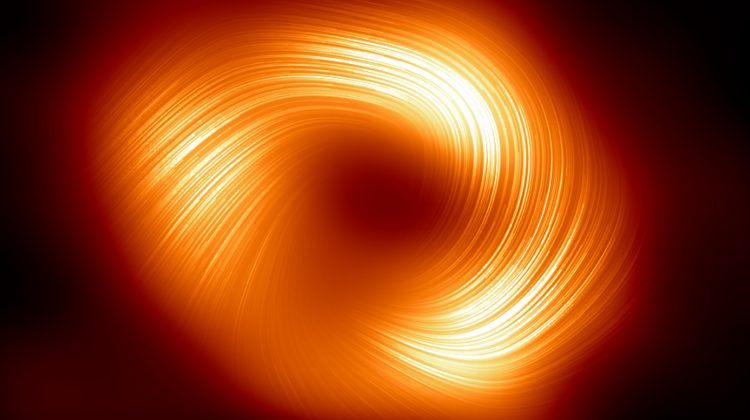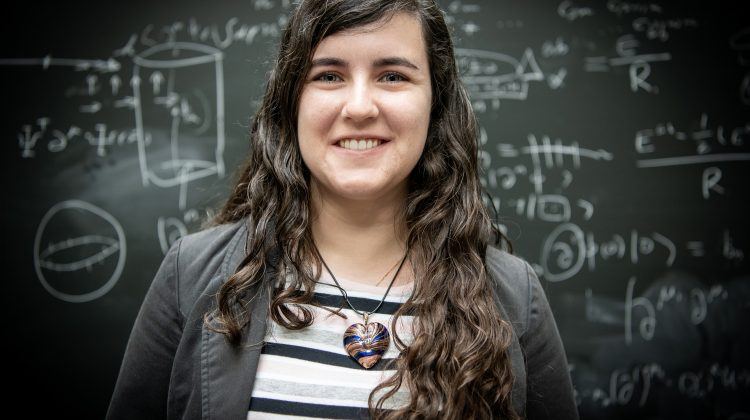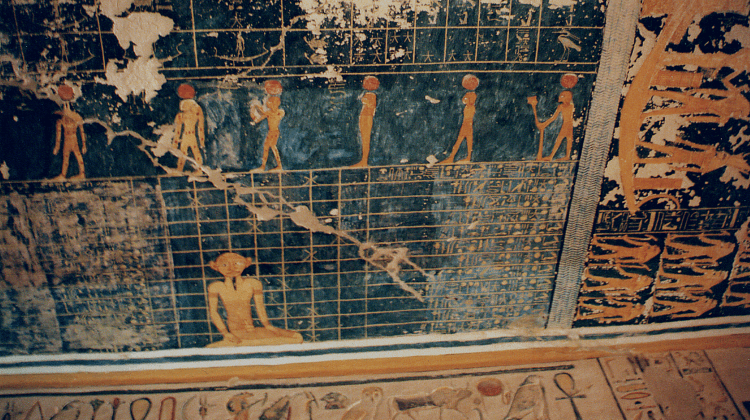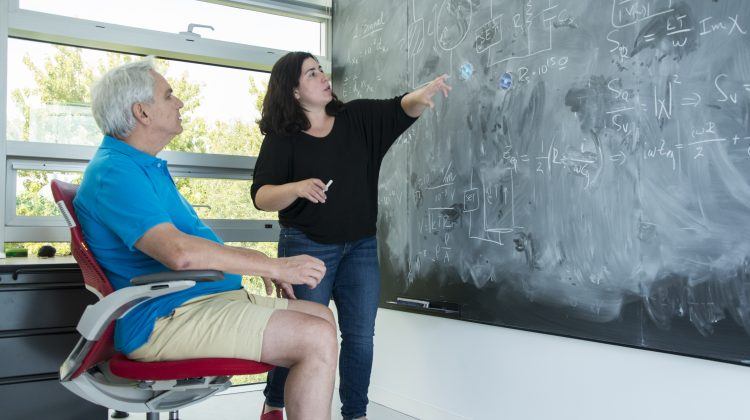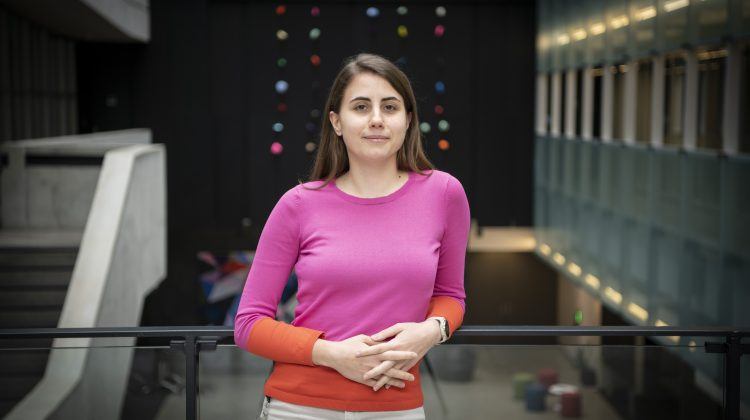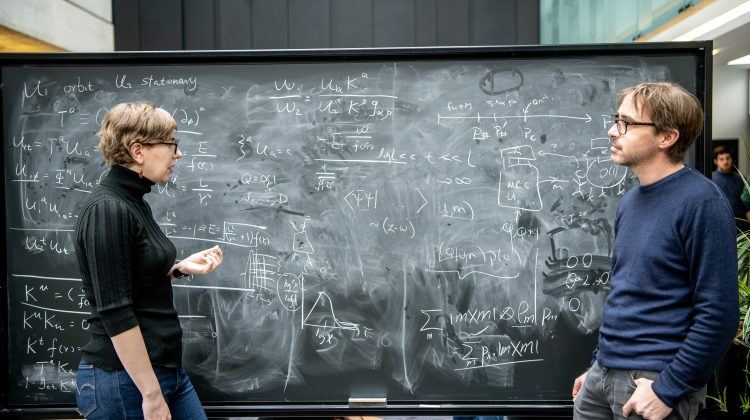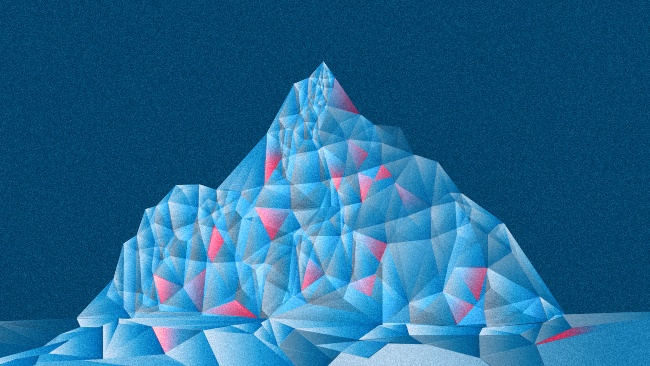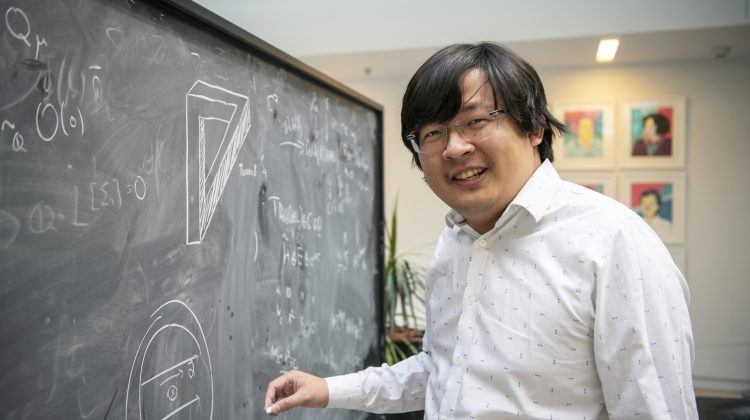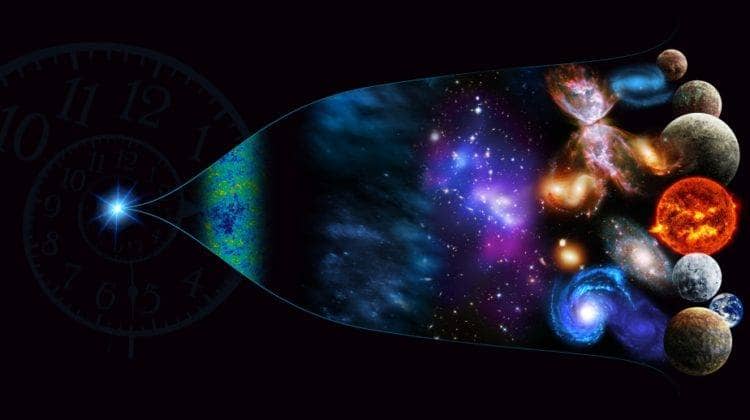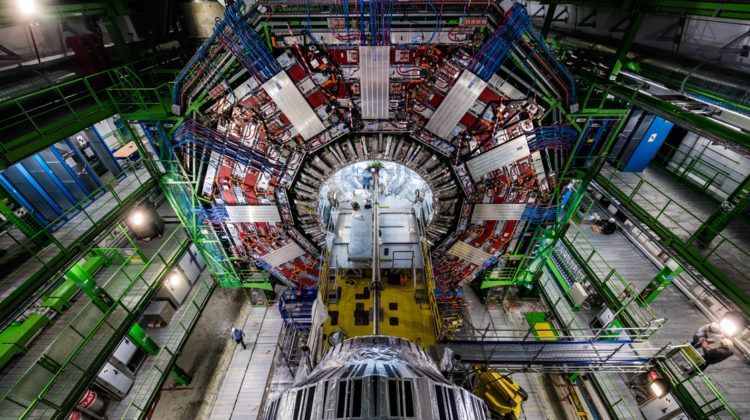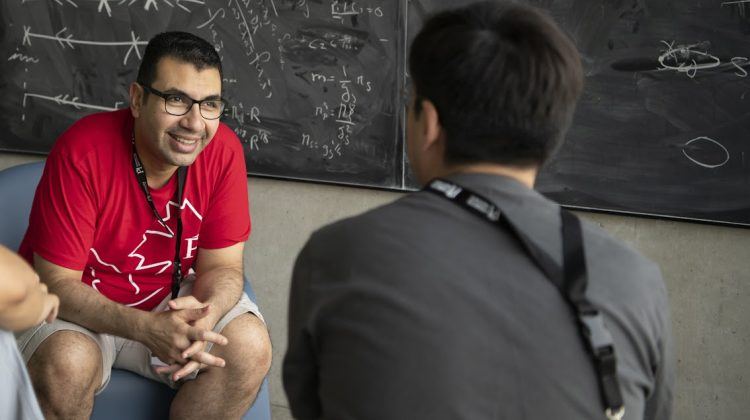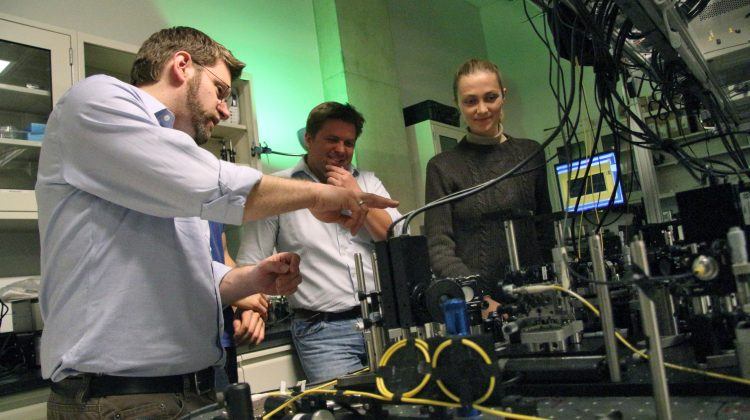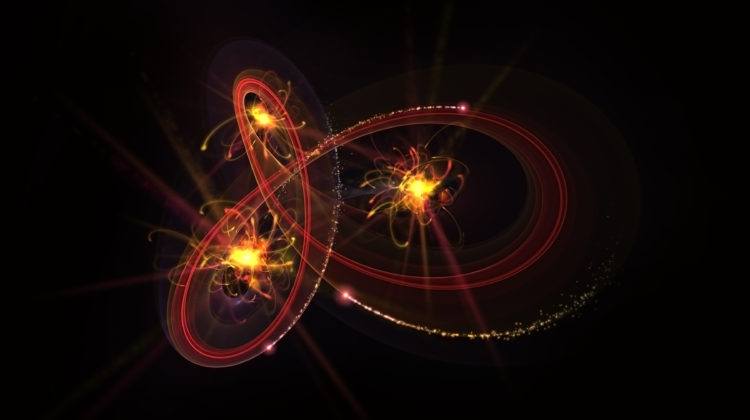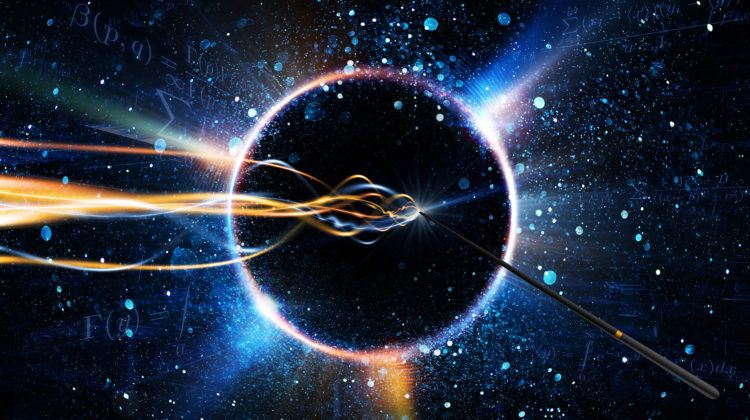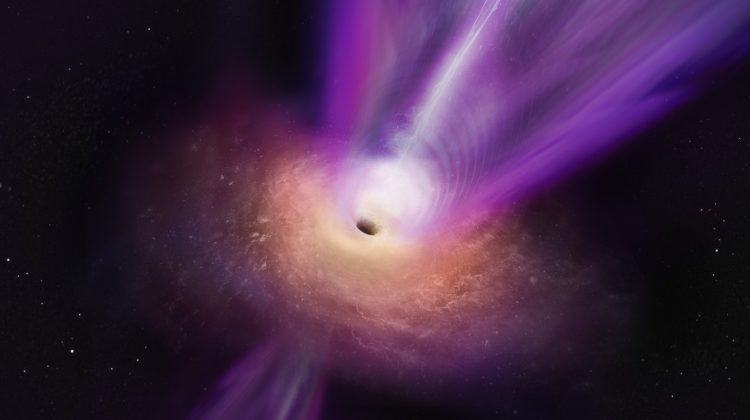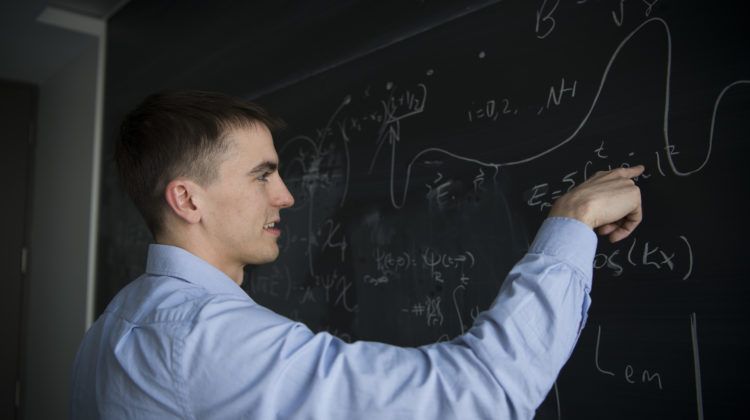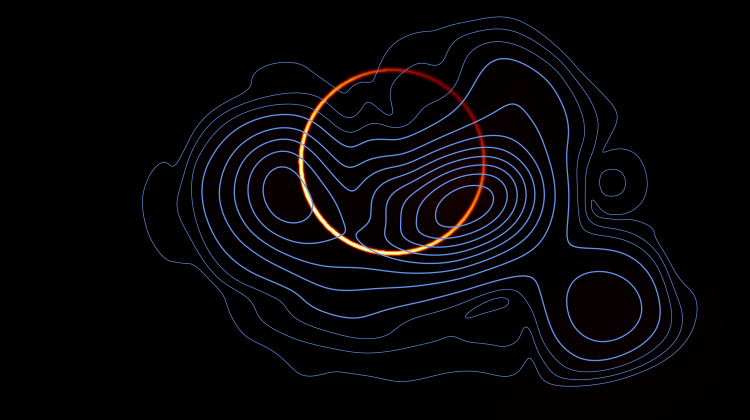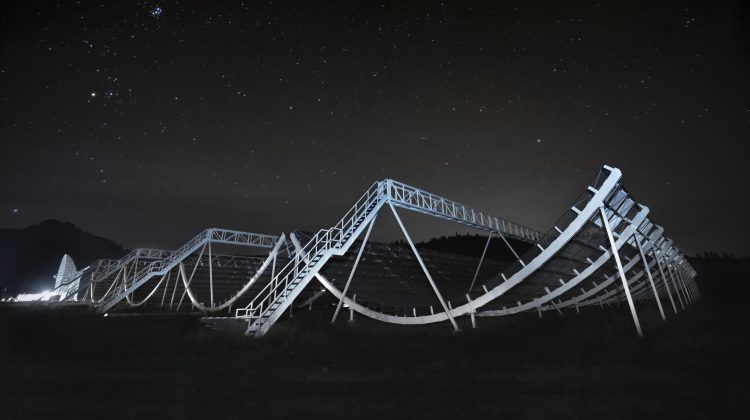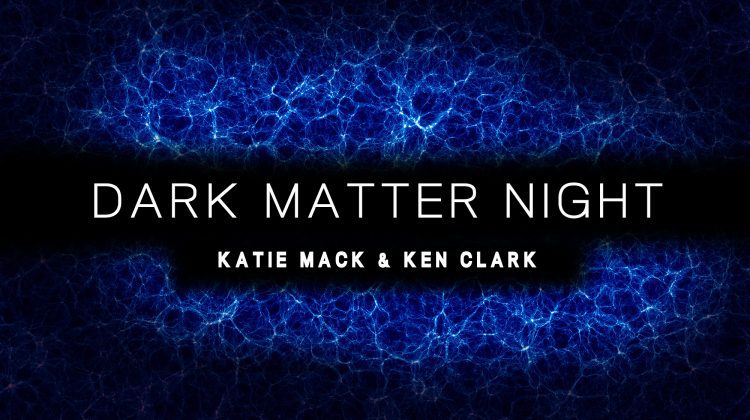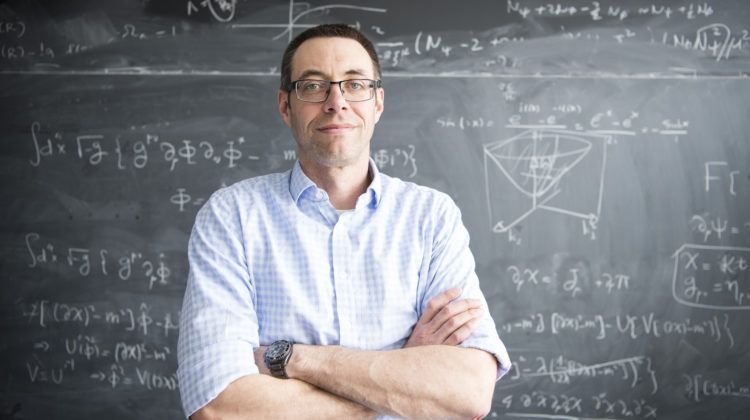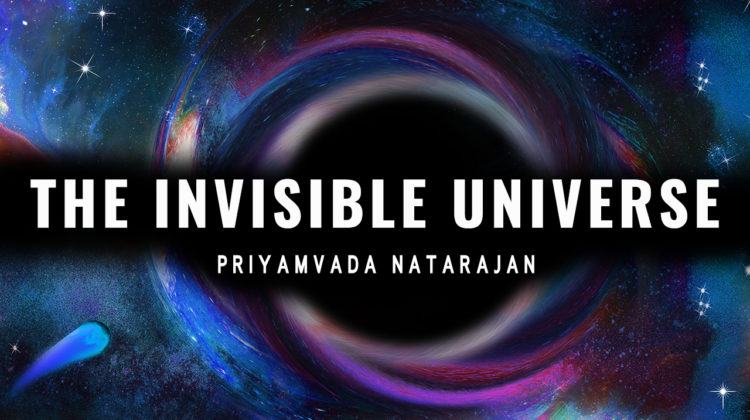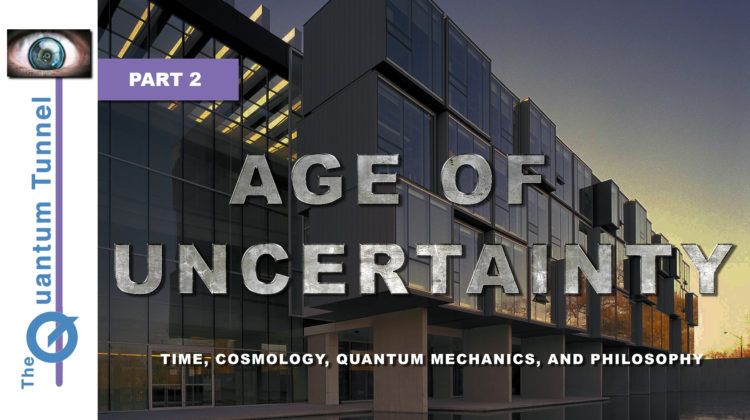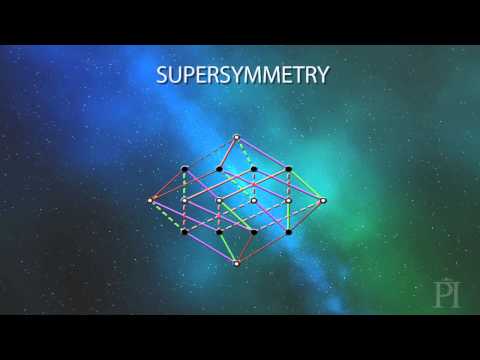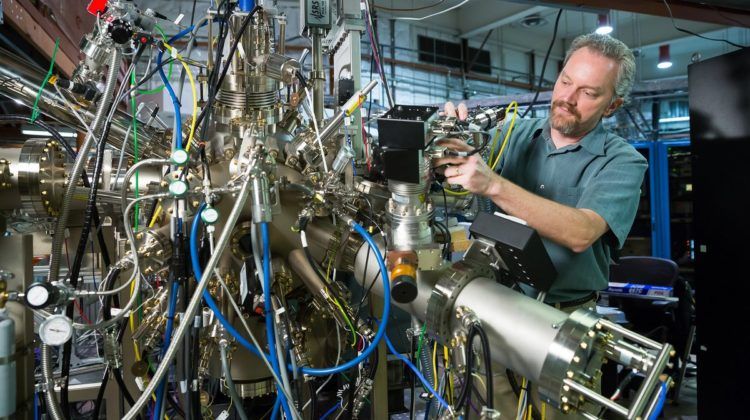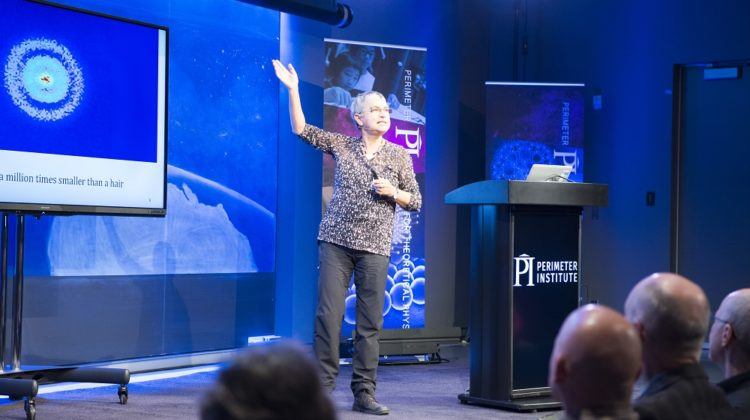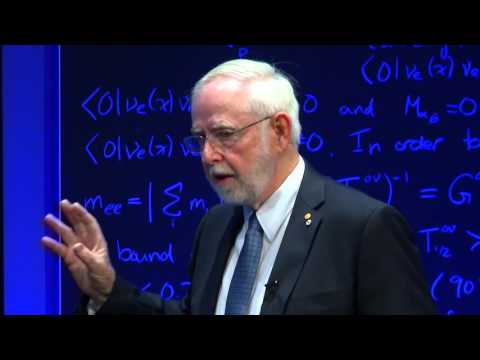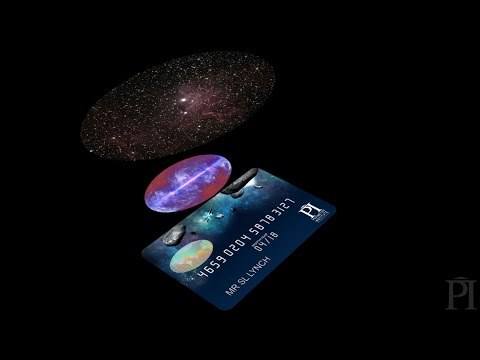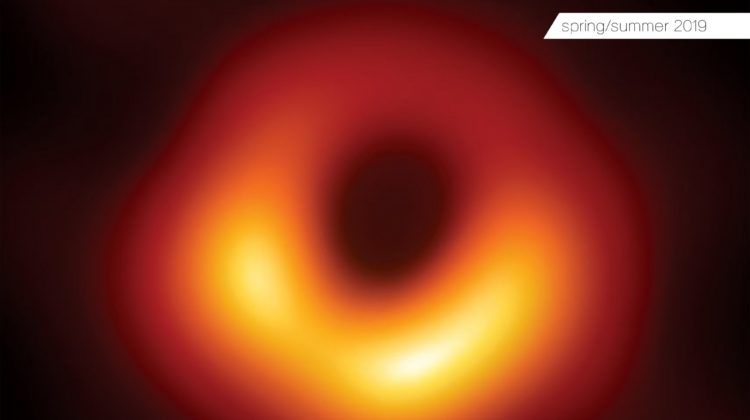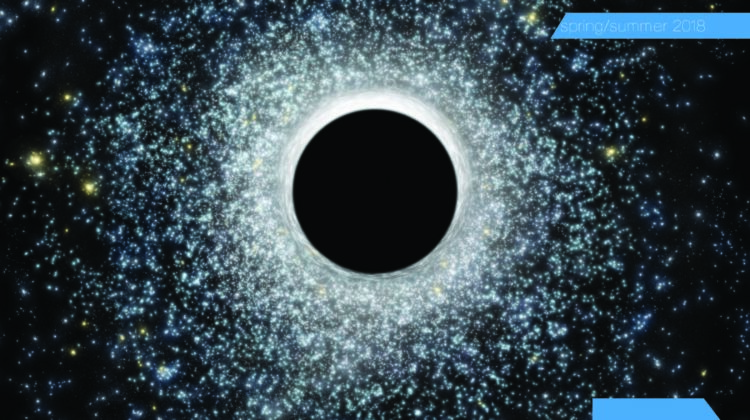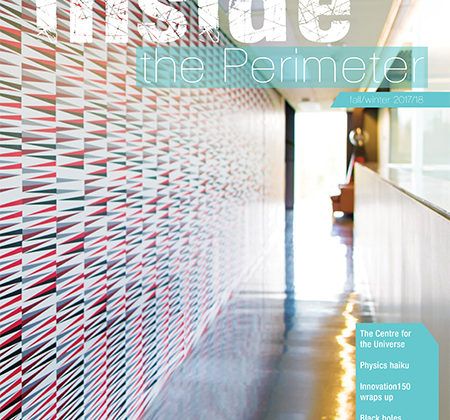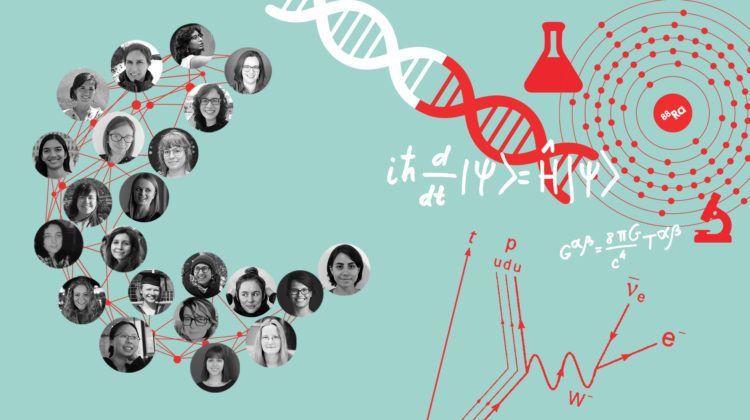Astronomers produce first image of a black hole’s shadow with a powerful jet
The new research published in Nature “significantly enhances our view of the environment of black holes and the origins of astrophysics jets,” says Perimeter’s Avery Broderick.
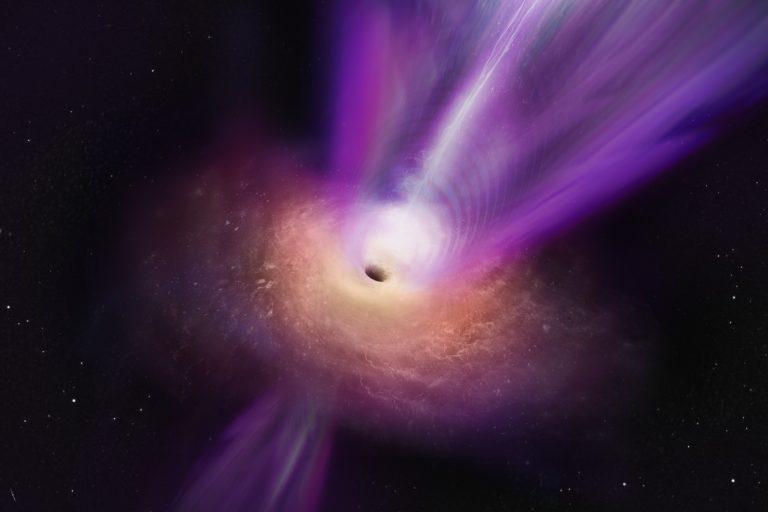
An international team of scientists has used new millimetre-wavelength observations to produce an image that shows, for the first time, both the ring-like structure that reveals the matter falling into the central black hole and the powerful relativistic jet in the galaxy Messier 87.
The image underlines the connection between the accretion flow near the central supermassive black hole and the origin of the jet.
The new observations were obtained with the Global Millimetre VLBI Array (GMVA), complemented by the phased Atacama Large Millimetre/submillimetre Array (ALMA) and the Greenland Telescope (GLT). The addition of these two observatories has greatly enhanced the imaging capabilities of the GMVA. The results are published in Nature.
This artist’s conception shows a close-up view to the accretion flow and the jet emerging from black hole region in Messier 87. Credit: Sophia Dagnello, NRAO/AUI/NSF.
“Previously, we had seen both the black hole and the jet in separate images, but now we have taken a panoramic picture of the black hole together with its jet at a new wavelength,” says Ru-Sen Lu, from the Shanghai Astronomical Observatory and leader of a Max Planck Research Group at the Chinese Academy of Sciences.
The surrounding material is thought to fall into the black hole in a process known as accretion. But no one has ever imaged it directly.
“The ring that we have seen before is becoming larger and thicker at 3.5 mm observing wavelength,” adds Lu. “This shows that the material falling into the black hole produces additional emission that is now observed in the new image. This gives us a more complete view of the physical processes acting near the black hole.”
The participation of ALMA and GLT in the GMVA observations and the resulting increase in resolution and sensitivity of this intercontinental network of telescopes has made it possible to image the ring-like structure in M87 for the first time at the wavelength of 3.5 mm. This diameter is 50 percent larger than what was seen in observations by the Event Horizon Telescope at 1.3 mm, in accordance with the expectations for the emission from relativistic plasma in this region.
The participation of ALMA and GLT in the GMVA observations and the resulting increase in resolution and sensitivity of this intercontinental network of telescopes has made it possible to image the ring-like structure in M87 for the first time at the wavelength of 3.5 mm. This diameter is 50 percent larger than what was seen in observations by the Event Horizon Telescope at 1.3 mm, in accordance with the expectations for the emission from relativistic plasma in this region.
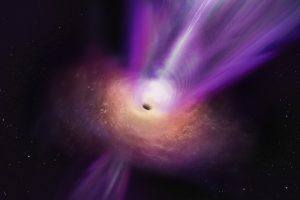
“With the greatly improved imaging capabilities by adding ALMA and GLT into GMVA observations, we have gained a new perspective. We do indeed see the triple-ridged jet that we knew about from earlier VLBI observations,” says Thomas Krichbaum from the Max Planck Institute for Radio Astronomy (MPIfR).
“But now we can see how the jet emerges from the emission ring around the central supermassive black hole and we can measure the ring diameter also at another (longer) wavelength.”
“The scales in this new image extend over a scale 15 times larger than the iconic Event Horizon Telescope (EHT) image of a black hole, and a dynamic range of 500 — about 50 times that of the EHT image,” says Avery Broderick, a member of the EHT collaboration and an associate faculty member at Perimeter Institute and the University of Waterloo.
“This enables connecting the astrophysical dramas near the event horizon to the near-lightspeed outflow of plasma and electromagnetic fields that extend the influence of black holes beyond their host galaxies.”
The light from M87 is produced by the interplay between highly energetic electrons and magnetic fields, a phenomenon called synchrotron radiation. The new observations, at a wavelength of 3.5 mm, reveal more details about the location and energy of these electrons.
They also tell us something about the nature of the black hole itself: it is not very hungry. It consumes matter at a low rate, converting only a small fraction of it into radiation.
The new maps are “beautifully consistent” with the findings in previous work by the EHT collaboration about the photon ring of the M87 black hole, said Broderick, who also holds the Delaney Family John Archibald Wheeler Chair at Perimeter.
Keiichi Asada of Academia Sinica, Institute of Astronomy and Astrophysics, explains: “To understand the physical origin of the bigger and thicker ring, we had to use computer simulations to test different scenarios. As a result, we concluded that the larger extent of the ring is associated with the accretion flow.”
The quest to learn more about M87 is not over, as further observations and a fleet of powerful telescopes continue to unlock its secrets.

